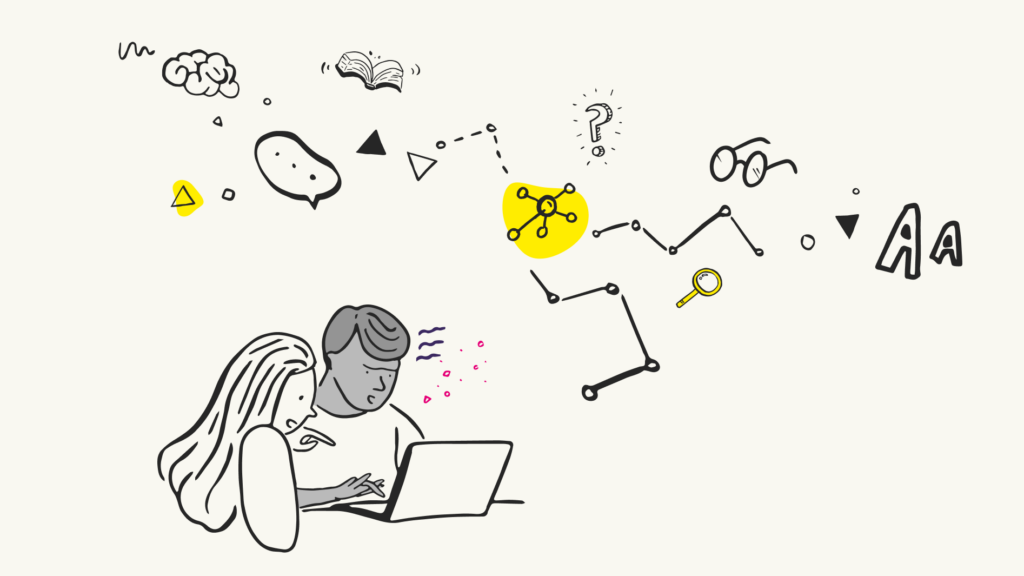In a world where more people are online than ever, services are now being pushed to a digital platform, so it’s important to ensure that everyone is able to access them. There are two ways this can be easily achieved, using Assistive Technology and/or providing Assisted Digital Support.
Assistive and assisted. Both sound extremely similar, serve similar purposes, but in fact they are both used for different reasons. In this blog I’ll be talking about the differences between Assistive Technology and Assisted Digital Support and how these can benefit different people.
What is Assistive Technology?
Assistive technology is a piece of software or hardware that is used by people with disabilities to bridge between their capabilities, and those expected by a product or service. This enables people to perform tasks or daily activities that may be difficult or impossible to conduct without that support.
There are a wide range of assistive technologies that can adapt to impairments, and many people may rely on more than one depending on their access needs and the type of activity. The following list is a small handful of the different types of Assistive Technology that is available:
Screen readers – A text-to-speech based software that is heavily used by people with visual or cognitive impairments that reads out text that is displayed on a screen. Those created for visual impairments also have a great deal of keyboard functionality built in so that a mouse is not needed. Read more about screen readers in this blog article.
Screen magnifiers – A software that enlarges screen content, this can either be a section or the whole screen which is commonly used by people with visual impairments.
Speech recognition – A speech-to-text software that converts speech into text, either to enter text or to give commands to programs and browsers. This is used by people with visual and cognitive and mobility impairments.
Reading and writing support – Software that helps people with learning impairments improve their grammar, spelling, vocabulary and literacy. There are even technologies that add icons to text to enable some people with cognitive impairments to understand the content.
However, Assistive Technology is not magic, in order for a person who relies on Assistive Technology to use services online those services must meet them halfway. A useful baseline is for the service to meet Web Content Accessibility Guidelines (WCAG 2.1), which defines a minimum requirement that any website should be able to meet.
Assistive Technology can come in many different forms, it is not limited to an aiding device or a piece of installed software, Assistive Technology is expanding into the mainstream technology world. We can find a variety of accessibility features on our smartphones which is not only beneficial for people with disabilities, but we can also find ourselves using some of the features to help enhance our productivity, such as Siri which is a speech recognition tool.
Over the years as the use of technology continues to grow, it is likely we will see more Assistive Technology slowly merge into the mainstream world where it could be used to improve the lifestyle and productivity of people who don’t have a disability. One great example is the Amazon Echo, a virtual personal assistant that is controlled by speech recognition, where you can tell or ask the household appliance to conduct a number of tasks or questions.
What is Assisted Digital Support?
There are over 9 million adults in the UK who are considered digitally illiterate, so when developing and implementing a digital service it is important not to exclude them. Anything developed as ‘digital by default’ is running that risk.
“Assisted Digital Support” is essentially a helping hand given to those who are unable to use online services independently, it is a proactive approach which helps to not only build and increase someone’s digital skills but also their confidence in using services online.
There are two main reasons why people may need Assisted Digital Support. The first is that a person has a permanent disability and relies on someone to help complete an online service. The second reason is that the person does not currently have the digital skills or knowledge to use digital services, but may be able to overcome this and improve their skills.
There are also a number of other reasons why people are reluctant or unable to use online services, and therefore may require Assisted Digital Support:
-
- The service is not accessible for people with disabilities
-
- A lack of language or literacy skill
-
- Limited or no access to the internet;
-
- A preference for non-digital services i.e. paper forms
-
- A lack of digital skills and confidence
-
- A new system that they are not familiar with
Prior to deciding which Assisted Digital Support is suitable and appropriate to provide for a service, it is important to understand and research people’s needs and determine where and how they need help. Assisted Digital Support would need to be useful and relevant for that particular service, this can be identified by usability testing. That means testing the service, gathering feedback from users and then developing the service further by acting on that feedback.
Assisted Digital Support can be provided in three different forms, in person, online and over the telephone.
In person
Providing support face-to-face is a person guiding someone through a service or answering queries that the person may have regarding the service they are using, the person providing support can also enter information on a person’s behalf, this could be due to a disability they have which prevents them from being able to input information.
Online
Online support is usually achieved by implementing a live web chat service that allows people to communicate and interact in real time with the supporter. People can expect a prompt response and therefore will be able to easily and quickly complete an online service, assuming they can use the live-chat.
Some people may not have the confidence to speak over on the telephone to ask a query, so a live web chat can help eliminate that fear.
An example of where this may be useful is going through a Tax Refund service, some people may not know how or where to find their tax details, providing a live web chat they can simply ask a question and instantly receive a response that will help solve their issue (in many cases).
Telephone
Assisted Digital Support can be provided over the telephone, so that people are guided and have their queries answered over the phone. If people are unable to enter information on their own (this could be due to having limited access to the internet or a disability which causes a barrier) the person providing the support can enter on their behalf.
An example of where this may come in handy is going through the process of booking a driving theory test. Some users may need assistance when booking their theory test, especially if they don’t have an email address, so they can dial the provided number and support will be provided to them.
Things to consider
The vital part of implanting Assisted Digital Support for your service is to provide different options. Any one option cannot provide support for everyone. The type of service will impact what’s needed and thorough user-research of people’s needs will help with that decision.
Not every organisation can provide Assisted Digital Support, but if you work for a regulated organisation that deals with vulnerable customers, you should consider it. Making sure people are aware that Assisted Digital Support is available at the beginning of the service is important. People need to know what support is available and how to access it.
The support needs to be tailored correctly to the service and targeted user, if successful, users are more likely to be able to complete the online service independently in future.
If you’d like to learn more about how we can work with you to review, design and implement services that are accessible to both Assistive and Assisted Digital users, please drop us a line at hello@nomensa.com, call us on +44 (0)117 929 7333 or send us a message.
Explore our case study to witness how we’ve played a pivotal role as Royal Mail’s long-term accessibility partner, driving progress towards WCAG 2.0 Level AA and shaping a robust digital accessibility framework.
We drive commercial value for our clients by creating experiences that engage and delight the people they touch.
Email us:
hello@nomensa.com
Call us:
+44 (0) 117 929 7333




